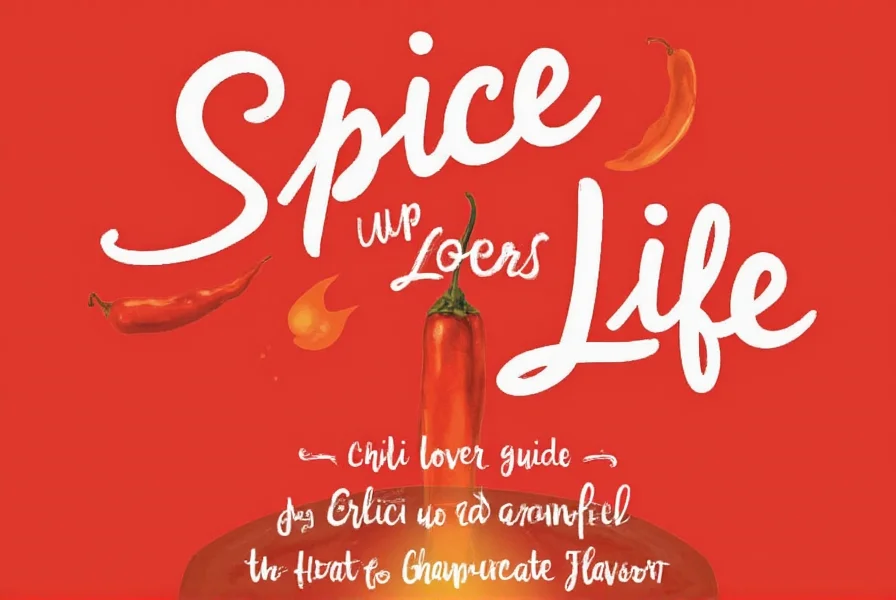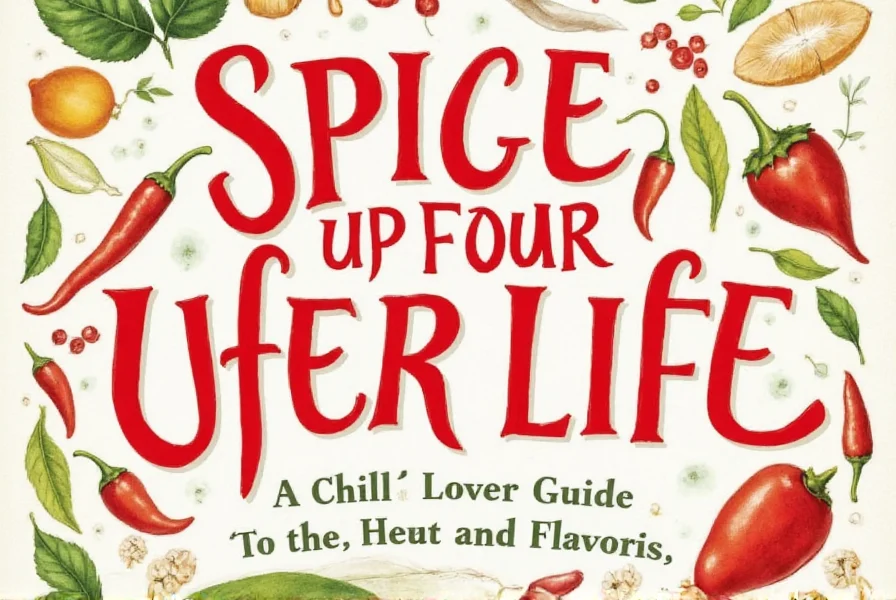Table of Contents
Introduction to Chili Spice Ingredients
Chili peppers are the backbone of global cuisine, offering a wide range of flavors and heat levels to elevate any dish. From mild and smoky to intensely fiery, understanding chili spice ingredients is key to mastering your cooking. This guide covers everything you need to know about chili peppers, including their types, flavor profiles, practical usage tips, buying advice, and answers to common questions.
Types of Chili Spices and Their Flavors
There are over 500 varieties of chili peppers, but here are the most commonly used chili spice ingredients with detailed characteristics:
| Chili Variety | Origin | Heat Level (Scoville Units) | Flavor Profile | Best Uses |
|---|---|---|---|---|
| Chipotle | Mexico | 2,500 - 8,000 | Smoky, earthy, slightly sweet | Sauces, stews, grilled meats, adobo |
| Habanero | Caribbean | 100,000 - 350,000+ | Fiery, fruity, citrusy | Hot sauces, salsas, marinades, Caribbean dishes |
| Jalapeño | Mexico | 2,500 - 8,000 | Mild, grassy, slightly sweet | Guacamole, tacos, pickling, stuffed peppers |
| Poblano | Mexico | 1,000 - 1,500 | Earthy, mild, slightly sweet | Stuffed peppers, salsas, enchiladas, mole sauces |
| Cayenne | South America | 30,000 - 50,000 | Sharp, spicy, tangy | Seasoning blends, hot sauces, rubs, spice mixes |
| Serrano | Mexico | 10,000 - 23,000 | Crisp, bright, medium heat | Salsas, pico de gallo, Asian stir-fries |
| Bell Pepper | South America | 0 | Sweet, mild, no heat | Salads, stir-fries, roasting, stuffing |
Each chili has a different heat level and flavor profile, making them ideal for various dishes. The key is to match the spice to the dish and your personal taste preferences.
Practical Tips for Using Chili Spices
Whether you're just starting out or looking to refine your skills, here are professional tips for using chili spices effectively:
- Start small: If you're unsure about heat levels, begin with a small amount and adjust gradually. Remember: you can always add more heat, but you can't remove it once added.
- Use gloves: Always wear food-safe gloves when handling fresh chilies to prevent skin irritation or accidental eye contact.
- Roast for depth: Roasting chilies enhances their flavor and adds a smoky note perfect for sauces and stews. For dried chilies, toast them briefly in a dry pan before grinding.
- Balance with sweetness: Pair spicy dishes with something sweet like mango, honey, or fruit to create a balanced flavor profile.
- Reduce heat: If you've added too much heat, add dairy (milk, yogurt), sugar, or acid (vinegar, lime juice) to balance it out.
- Handle safely: Wash hands thoroughly after handling hot peppers, and avoid touching your face until thoroughly cleaned.
Remember, the goal is to enhance your dish, not overpower it. Chili spices are all about balance and creativity.

Buying Guide for Chili Spice Ingredients
When selecting chili spice ingredients, consider these expert recommendations:
1. Fresh vs. Dried
Both fresh and dried chilies have their advantages. Fresh chilies are great for adding moisture and immediate heat, while dried chilies offer more intense flavor and longer shelf life. Dried chilies also concentrate flavors and are essential for many traditional recipes.
2. Quality Indicators
For fresh chilies: Look for firm, shiny skin without wrinkles or soft spots. Avoid any with mold or blemishes. For dried chilies: Check for vibrant color and no signs of mold or dust. Whole dried chilies should be pliable, not brittle.
3. Regional Varieties
Some regions are known for producing specific types of chilies. For example, Mexico is famous for jalapeños and poblanos, India for ghost peppers, and the Caribbean for habaneros. Exploring regional varieties can expand your culinary horizons.
4. Proper Storage
Store fresh chilies in the refrigerator crisper drawer for up to two weeks. Dried chilies and ground spices should be kept in airtight containers away from direct sunlight, heat, and moisture. Ground spices retain potency for 6-12 months, while whole dried chilies can last up to two years.
5. Substitution Guide
When substituting chilies, consider both heat level and flavor profile. For example:
- Use guajillo peppers instead of ancho for similar flavor with slightly more heat
- Substitute paprika for cayenne for milder heat
- Replace serrano with jalapeño for a similar profile with less intensity
Frequently Asked Questions About Chili Spice Ingredients
What are the main ingredients in chili spice blends?
Traditional chili spice blends typically contain ground chili peppers as the primary ingredient, along with complementary spices like cumin, garlic powder, onion powder, oregano, and paprika. Some blends may also include salt, black pepper, and other regional spices depending on the specific cuisine.
What's the difference between chili powder and cayenne pepper?
Chili powder is typically a blend of ground chili peppers and other spices like cumin and garlic, while cayenne pepper is made from a single type of chili (the cayenne pepper) and is much hotter. Chili powder usually ranges from mild to medium heat, while cayenne is significantly hotter with a Scoville rating of 30,000-50,000 units.
How do I store chili spices properly?
Store chili spices in airtight containers away from direct sunlight, heat, and moisture. Ground spices retain their potency for about 6-12 months, while whole dried chilies can last up to 2 years. For maximum freshness, keep them in a cool, dark place like a pantry or cupboard.
Are chili spices healthy?
Yes, chili spices offer several health benefits. Capsaicin, the compound that makes chilies hot, has been shown to boost metabolism, reduce inflammation, and provide pain relief. Chilies are also rich in vitamins A and C. However, consume them in moderation if you have digestive sensitivities.
What's the mildest chili spice for beginners?
Poblano and Anaheim peppers are excellent starting points for beginners, with mild heat levels (1,000-2,000 Scoville units). Ancho chili powder, made from dried poblanos, offers a rich, smoky flavor with minimal heat. Bell peppers, while not technically "hot," can help you get accustomed to chili flavors without the burn.
Can I substitute one chili spice for another?
Yes, but with caution. When substituting, consider both heat level and flavor profile. For example, you could use guajillo peppers instead of ancho for similar flavor with slightly more heat. For milder substitutions, try using paprika instead of cayenne. Always start with less than you think you need, as you can always add more heat but can't remove it once added.
How do I handle hot peppers safely?
Always wear food-safe gloves when handling hot peppers. Avoid touching your face, especially eyes, until your hands are thoroughly washed with soap and water. If you experience skin irritation, apply milk or yogurt to neutralize the capsaicin. For eye exposure, rinse with cool water for at least 15 minutes and seek medical attention if irritation persists.
What's the best way to reduce heat in a dish?
If you've added too much heat, add dairy (milk, yogurt, sour cream), sugar, or acid (vinegar, lime juice) to balance it out. Starchy ingredients like rice or potatoes can also help absorb some of the heat. Remember: you can't remove heat once added, so prevention is key by starting with small amounts.
Conclusion
Chili spice ingredients are more than just a source of heat—they're a gateway to a world of rich, complex flavors. Whether you're experimenting in the kitchen or simply enjoying a spicy meal, understanding these ingredients can transform your culinary experience.
So next time you reach for a chili, take a moment to think about its origin, flavor, and how it can bring a new dimension to your dish. Remember, the best recipes often come from a little bit of heat and a lot of heart.

Now go out there and spice up your life—your taste buds will thank you!










 浙公网安备
33010002000092号
浙公网安备
33010002000092号 浙B2-20120091-4
浙B2-20120091-4